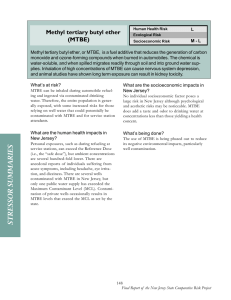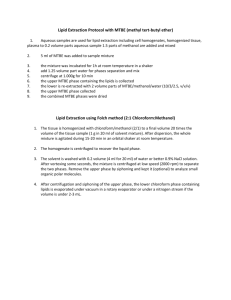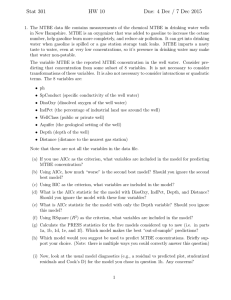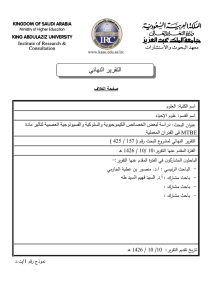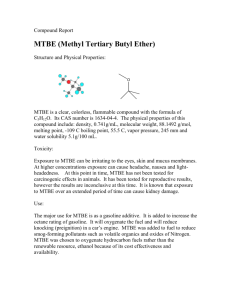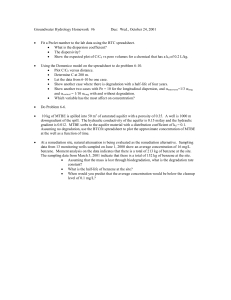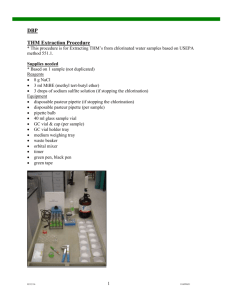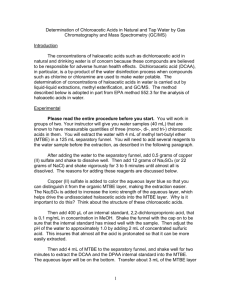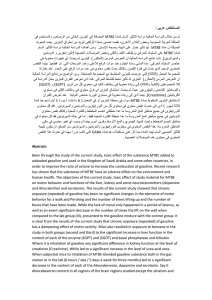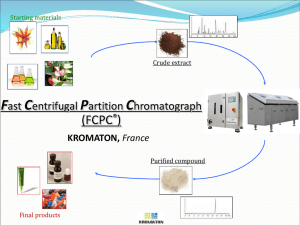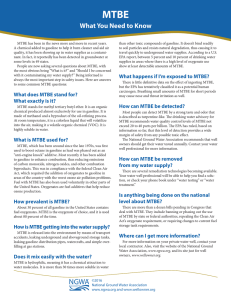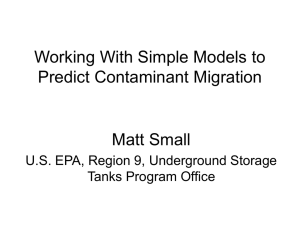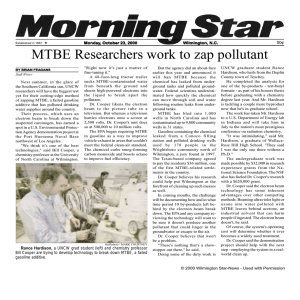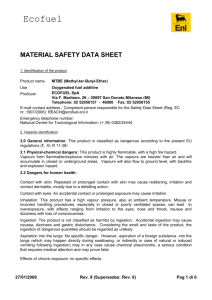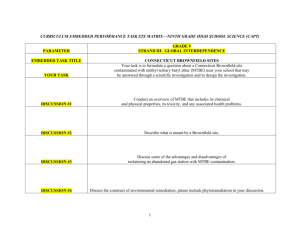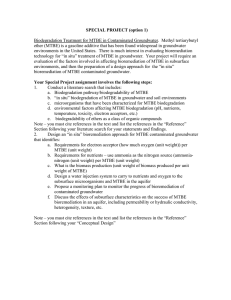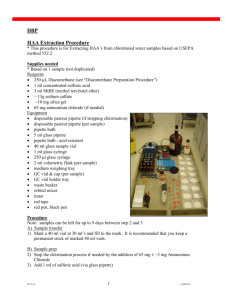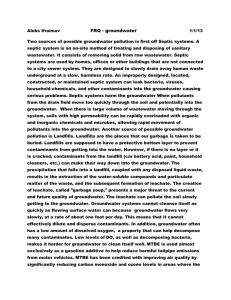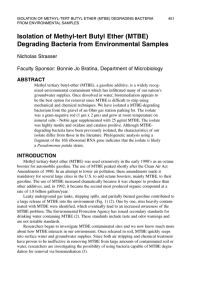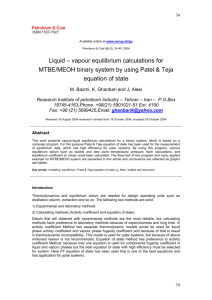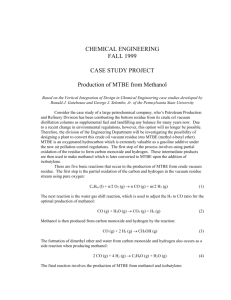MTBE (methyl-tertiary butyl ether)
advertisement
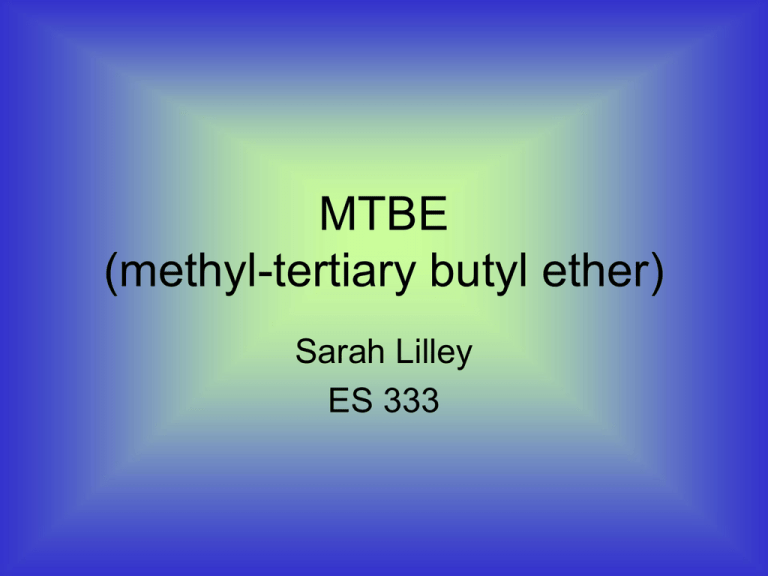
MTBE (methyl-tertiary butyl ether) Sarah Lilley ES 333 History of MTBE • First introduced in 1979 • Used as an oxygenate to curb lead emissions • Wide-spread use following CAA of 1990 • Reduced ground-ozone and cancer risk due to automobile emissions • Easily produced • Cheaper than alternatives, such as ethanol The Issue • Found to contaminate groundwater as early as 1980 • Doesn’t adhere to soil particles • Easily soluble in water, difficult to remove • Main leak source: underground storage tanks • Contaminated water tastes like turpentine • States which once had high levels of air pollution now had high levels of water contamination • Cleanup is estimated at $29 billion Advocates • Oil companies and their lobbyists • Oil-state politicians • Republicans Opponents • Environmental groups and their lobbyists • Corn-state politicians • Democrats Who’s Responsible for Cleanup? • Government: for requiring the use of oxygenates in gasoline? • Oil Companies: for using MTBE since it was cheap and easy to produce, rather than investigating alternatives? Energy Policy Act of 2005 • Sponsored by Joe Barton, R-TX, with cosponsors Richard Pombo, R-CA, and William Thomas, R-CA • Congress is aware that it authorized use of MTBE, knowing it to be a water contaminant • Congress recognizes the problem of MTBE contamination and the need for change • Offers assistance to oil companies to make switch from MTBE to other additives
